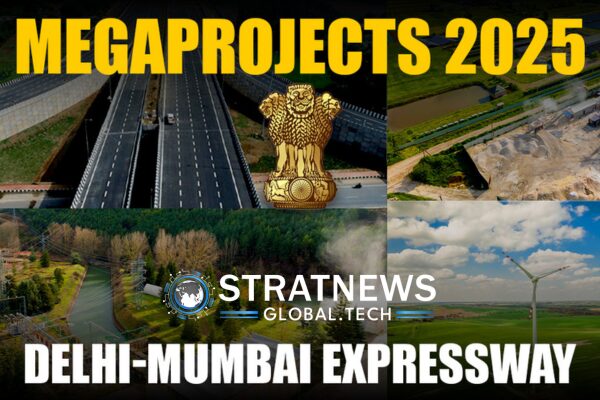Delhi–Mumbai Expressway: Paving the Way for a Transformative Journey Between India’s Capital and Financial Hub
The Delhi–Mumbai Expressway, a monumental infrastructure project connecting India’s political heart New Delhi to its financial pulse Mumbai, represents a critical advancement in the nation’s road transportation landscape. Spanning an impressive 1,350 kilometers and designed as an 8-lane highway with potential expansion to 12 lanes, this expressway promises to revolutionize travel between these two megacities by slashing travel times and enhancing economic interconnectivity.
Foundation and Vision
Initiated with a foundation stone laid by the Union Minister of Road Transport & Highways, Nitin Gadkari, in March 2019, the expressway’s conception was graced by key political figures, including Sushma Swaraj and Arun Jaitley. It was inaugurated by Prime Minister Narendra Modi, underscoring the project’s national significance. With an investment of around ₹1,00,000 crores (~US$13.1 billion), the expressway is a cornerstone in India’s infrastructural evolution, expected to be fully operational by 2026.
Route and Connectivity
The expressway begins at the Sohna Elevated Corridor in Delhi and stretches all the way to the Jawaharlal Nehru Port in Maharashtra. It carves through multiple states—Haryana, Rajasthan, Madhya Pradesh, Gujarat, and finally Maharashtra—integrating major urban nodes like Dausa, Kota, Ratlam, Vadodara, and Surat into a cohesive transport corridor. This expansive network not only enhances passenger movement but also optimizes freight flow to and from one of India’s busiest ports.
Engineering and Construction
The Delhi–Mumbai Expressway is a feat of modern engineering, divided into 52 construction packages across four major phases. The project employs both Engineering, Procurement and Construction (EPC) models and Hybrid Annuity Models (HAM), ensuring efficient and timely execution while mitigating financial and operational risks. Remarkably, the expressway set a world record in Gujarat by laying a 2.58 km stretch of Pavement Quality Concrete within 24 hours, showcasing the prowess and precision of its construction teams.
Special Features
What sets the Delhi–Mumbai Expressway apart are its several pioneering features aimed at enhancing user experience and safety. The expressway will host 93 wayside amenities spots, providing facilities such as ATMs, hotels, retail shops, and electric vehicle charging stations. It is also set to become the first in India to feature helipads and trauma centers every 100 kilometers, ensuring rapid response to emergencies.
An ambitious plan includes transforming a segment of the expressway into an electric highway, facilitating high-speed electric vehicle travel, which is expected to reduce logistics costs significantly by decreasing reliance on diesel. This segment will feature dedicated lanes for electric vehicles, further underscoring the project’s forward-thinking approach.
Environmental Considerations
Designed with sustainability at its core, the expressway will incorporate extensive tree plantations, watered through drip irrigation, and equipped with rainwater harvesting systems every 500 meters. Solar energy will complement state grid power to illuminate the expressway, reducing its carbon footprint and setting a benchmark for future projects.
Wildlife and Ecological Impact
Recognizing the critical wildlife corridors it intersects, the expressway includes innovative solutions like wildlife crossings and underpasses, specifically designed to minimize disruption in natural habitats. These crossings ensure safe passage for wildlife across regions, particularly in the ecologically sensitive zones of Rajasthan’s tiger reserves.
Economic Impact and Future Prospects
The expressway is expected to catalyze economic growth along its route, particularly enhancing real estate values and spurring industrial development in adjoining areas. By providing a swift connection between Delhi and Mumbai, it will also significantly boost trade and logistics, potentially reshaping the economic landscape of the regions it traverses.
In conclusion, the Delhi–Mumbai Expressway is more than just a road; it is a lifeline that will connect and integrate diverse parts of India more seamlessly than ever before. By the time of its completion in 2026, it will not only facilitate faster travel but also herald a new era of socio-economic transformation across the northern and western parts of the country, making it a key artery in India’s rapidly growing infrastructure network.


